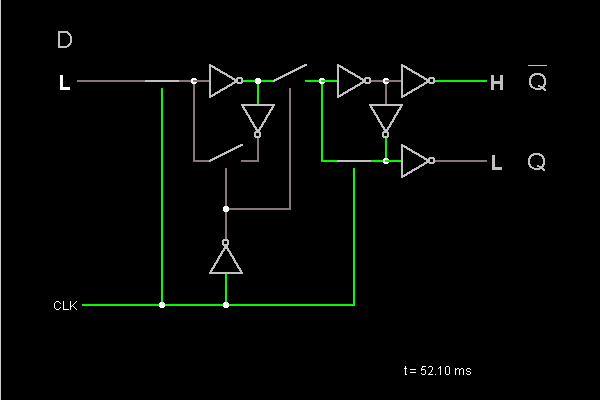Circuit Simulator - CMOS Master-Slave Flip-Flop
Why should I learn to use the circuit simulator to design CMOS Master-Slave Flip-Flop circuits?
Learn how to use circuit simulator software to design your own CMOS Master-Slave Flip-Flop circuits.
Where can I get a CMOS Master-Slave Flip-Flop circuit diagram with an explanation?
IndiaBIX provides numerous CMOS Master-Slave Flip-Flop circuit diagrams with detailed explanations and working principles.
How do I design a CMOS Master-Slave Flip-Flop circuit with this circuit simulator?
You can easily design CMOS Master-Slave Flip-Flop circuit diagrams by practising with the given circuit simulator. With this online circuit simulator, you can design and simulate your own electronic circuits.
CMOS Master-Slave Flip-Flop

Circuit Description:
This is a master-slave flip flop implemented with CMOS inverters and transmission gates. When the clock is low, the flip-flop retains its state. The first stage flip-flop, the master, consists of two inverters at the upper left which are connected in a positive feedback configuration so that their outputs do not change. When the clock goes high, the D input is transmitted to the first stage, and the second stage (the slave) is connected in positive feedback to ensure that the output still does not change. When the clock goes low again, the second stage is set to the same state as the first stage, changing the output. So the output changes only when the clock has a negative transition.
Discussion:
Be the first person to comment on this question !
Post your comments here:
Quick links
Quantitative Aptitude
Verbal (English)
Reasoning
Programming
Interview
Placement Papers